Small enough genus zygopetalum (Zygopetalum) is directly related to the orchid family. It combines 15 different types. This genus is represented by epiphytes, but sometimes, under certain habitat conditions, they can become lithophytes or terrestrial plants. All species of this genus can be found in the tropical regions of America, but the largest populations are found in the humid forests of Brazil.
Such a plant is related to the sympodial type. Zygopetalum differs in an unusual growth pattern. It grows with a ladder, while a rhizome (a modified creeping stem) is gradually forming in it, which rises above the soil surface, while each young pseudobulb grows slightly above the base of the old one. Smooth, green, short pseudobulbs have an oval or elliptical shape, while they are slightly flattened. They seem to be in a nest, which is formed by flat and rather wide petioles of a pair of leaves located below (the leaves fall off with age). On the upper part of the pseudobulb, 2 or 3 petiolate leaves grow. Glossy, leathery leaves have a broad-lanceolate shape and well-defined longitudinal veins.
Peduncles appear from the lower leaf sinuses. While young pseudobulbs appear, flower stalks begin to grow. Before the new pseudobulbs are fully ripe, very beautiful flowers bloom, collected in few-flowered inflorescences, shaped like a brush. The flowers are pronounced zygomorphic. 3 sepals (sepals) and 2 true petals (petals) have an interesting color and can combine a variety of shades of burgundy-brown, green, and purple. In this case, the flowers are both one-color and with various patterns and spots. 2 oval-pointed or obovate sepals located at the bottom, slightly wider than 3-o, which is located at the top and lies on the axis of symmetry. The petals are already of the third sepal. The modified 3rd petal (lip) has significant differences from the rest of the petals and sepals. It differs both in shape and size and color. The lip is fan-shaped with a wide base, and on its surface there is a clearly visible horseshoe-shaped protrusion. Often, the lip is white in color and there are many longitudinal long strokes or purple stripes on its entire surface. In this case, the lip stands out strongly against the general background of the corolla.
Caring for the zygopetalum orchid at home
Representatives of this genus are the most capricious and demanding in care of the entire extensive orchid family. For such a flower to grow and develop normally, it needs to provide conditions that are as close to natural as possible. In this regard, only experienced flower growers can afford to grow such an orchid.
Illumination
One of the main challenges is lighting. The fact is that different types may require different levels of illumination. However, for most species, bright lighting is suitable, but at the same time it must be diffused. You should also protect the plant from direct sunlight by shading it. The illumination level should be approximately 5000 lux. It is best to place the zygopetalum on an east or west orientation window. Good shading from the sun is needed on the south window, and backlighting on the north window.
If the lighting is too bright, it will provoke the rapid growth of peduncles. Because of this, the growth of young pseudobulbs slows down, and they do not have time to mature well. As a result, such pseudobulbs develop defective sprouts that cannot bloom next year.
If there is little light, then such an orchid is unlikely to bloom at all. And that's all, because the development of peduncles is suspended, and the formed flower buds die off.
Temperature regime
A cool temperature regime is suitable for such a plant. He needs a mandatory daily temperature drop. The best daytime temperature is considered to be 16-24 degrees, and the nighttime temperature is about 14 degrees. Moreover, this temperature regime is year-round. However, zygopetalum is able to withstand a short-term increase in temperature up to 42 degrees, and a decrease - up to 3-5 degrees.
In the warm season, it is recommended to transfer the plant to the street (to the garden or to the balcony). However, care must be taken that there is no threat of night frosts while the flower is in the fresh air. On the street, the flower will be provided with a natural drop in daily temperatures.
Earth mix
Both a special block and a pot filled with substrate are well suited for growing. It should be remembered that the substrate should absorb liquid well, so, it contains finely fractionated pine bark, expanded clay, sphagnum, and peat. The most suitable pots for planting should be made of plastic. The fact is that the roots of such an orchid seem to grow into any porous surface (for example, clay), and therefore difficulties may arise during transplantation.
It is possible to grow zygopetalum on a block only in an orchidarium or a greenhouse, since it needs to provide the most favorable conditions. The block can be made from a piece of pine bark, which must be large enough. On the surface of the block, you need to fix the roots, and on top of them you need to put a not very thick layer of sphagnum or coconut fiber.
How to water
For irrigation, extremely soft water at room temperature is suitable, which must be filtered. Heated melt water or rainwater can be used.
This genus of orchids differs from most others in that it reacts negatively to strong drying of the substrate (and this is what is often recommended for other genera). The fact is that on the surface of the roots there is no sufficiently thick layer consisting of velamen, which has a porous structure, which can absorb and retain water. In this regard, if the substrate is overdried, the roots may die. But at the same time it is worth remembering that liquid should not stagnate in the substrate, because this worsens its air permeability, and oxygen is necessary for the root system.
However, there is one caveat here.Over the years, the velamen layer becomes thicker, as it gradually adapts to the conditions of detention. In this regard, zygopetalums of the same species may have different roots. So, if the plant was grown all the time in arid conditions, its roots will be airy, with the ability to store liquid. And if in this case the substrate is wet all the time, then this can ruin the flower. If the velamen layer on the root system is very thin, then a prolonged dry period will lead to the death of the roots.
For zygopetalum, it is recommended to keep the substrate in a slightly moist state. So, water should not protrude from pieces of bark, and the substrate should not stick together.
Watering is recommended by immersion method. To do this, the container is filled with water and a block or pot is immersed in it for a third of an hour. After that, the plant is taken out and waited for excess water to drain. Then he is put in his usual place.
Air humidity
Such an orchid needs a high enough humidity. The fact is that in her homeland, even during a prolonged drought, the humidity is not less than 60 percent. The most suitable humidity is 75 to 100 percent. To increase humidity, in addition to spraying, it is imperative to use other methods. At the same time, water in a pan filled with expanded clay, and an open container with liquid located nearby, will not help much. In the absence of a specially equipped room or orchidarium, you need to regularly use a household steam generator or a humidifier. Flowers grown on blocks are especially in need of high humidity.
Fertilizer
Zygopetalum can react negatively to feeding if the fertilizers contain potassium and phosphorus salts, since they quickly destroy the root system. You need to feed carefully. So, it is recommended to fertilize the plant during intensive growth 1 time in 2 or 3 weeks. For this, a specialized fertilizer for orchids is used, while it is recommended to take ½ – 1/4 of the dose recommended on the package. Foliar dressing is also systematically carried out, so the foliage is sprayed with a very weak nutrient solution.
Transplant features
The transplant is carried out only if necessary, for example, when young growths will not fit into the container. During transplantation, it is recommended to carefully remove completely dried pseudobulbs and dried or decayed roots, which makes the bush more compact. It should be remembered that it is extremely undesirable to remove shriveled pseudobulbs, even those that have lost their attractiveness and foliage, because they contain valuable nutrients that the zygopetalum needs for normal growth.
Reproduction methods
When grown indoors, this kind of orchid can be propagated only by dividing the rhizome. It is worth remembering that each division must have at least three mature pseudobulbs. The strips should be left in the open air for a while to dry the sections. Also, experts advise sprinkling the places of cuts with crushed charcoal in order to avoid the development of rot.
Seed, as well as meristem (cloning), propagation is carried out only in industrial conditions.
Pests and diseases
Often to settle on foliage spider mite... When it is found, you need to arrange a warm (about 45 degrees) shower, while thoroughly rinsing the foliage. If there is such a need, then the shower can be arranged for the plant several times.
Frequent diseases are a variety of rot (bacterial and fungal), leaf spots. It is almost impossible to cure a diseased plant. In this regard, it is recommended to provide the plant with the most comfortable conditions for its growth and development, which should be very similar to natural conditions in order to avoid the development of diseases.
Video review


Watch this video on YouTube
Main types
In flower shops, it is quite rare to find the original species of zygopetalum, as a rule, only interspecific hybrids can be found there. Below is a description of several main types.
Zygopetalum maculatum
The peduncle has a length of 40 centimeters and bears 8–12 flowers, which are 4 to 5 centimeters in diameter. Sepals and petals are elongated obovate, at the tips they have a not very large expansion. They are painted in greenish color, while many shapeless specks of burgundy color are scattered over the entire surface. On the white lip there are intermittent longitudinal stripes of a purple hue.
Zygopetalum pedicellatum
This view is similar to the previous one. However, it differs in that the narrower lip has a purely white wide part, while on the surface of the base, as well as on the remaining narrower area, there are a large number of small purple dots.
Zygopetalum maxillare
On a long peduncle (about 35 centimeters) there are 5-8 large flowers with a diameter of 6 centimeters. The 2 sepals located below are almost completely painted in a burgundy-brownish color, while only in some places the main green color can be seen. From the middle to the base of the 3rd sepal and real petals are painted in the same burgundy-brownish shade, the second part is green, and there are large brown-burgundy spots on it. The lip has a smoothly changing color. So, it changes from a purple-white - at the tip, to a dark purple tint - at the base.
Zygopetalum triste
The peduncle can be up to 25 centimeters long, while the flowers have a diameter of 5 to 6 centimeters. Narrow, almost belt-like petals and sepals have a uniform brownish-burgundy color. Moreover, at their base there are specks of green color. On the snow-white petal, there are streaks of blurred purple color.
Zygopetalum pabstii
This species is the largest of all in this genus. It has very long peduncles reaching a height of 0.9 meters, and also has large flowers (about 10 centimeters in diameter). Sepals and petals have a color similar to most members of the zygopetalum genus. So, on the green surface there is a large number of burgundy-brownish specks. The white lip is almost completely covered with many blurred streaks of purple color.
Zygopetalum microphytum
This species is dwarf, so, its length is 15-25 centimeters, and the diameter of the flowers is 2.5 centimeters. Green petals and sepals are covered with burgundy-brownish specks. The white lip has streaks of dark purple color only on the base.

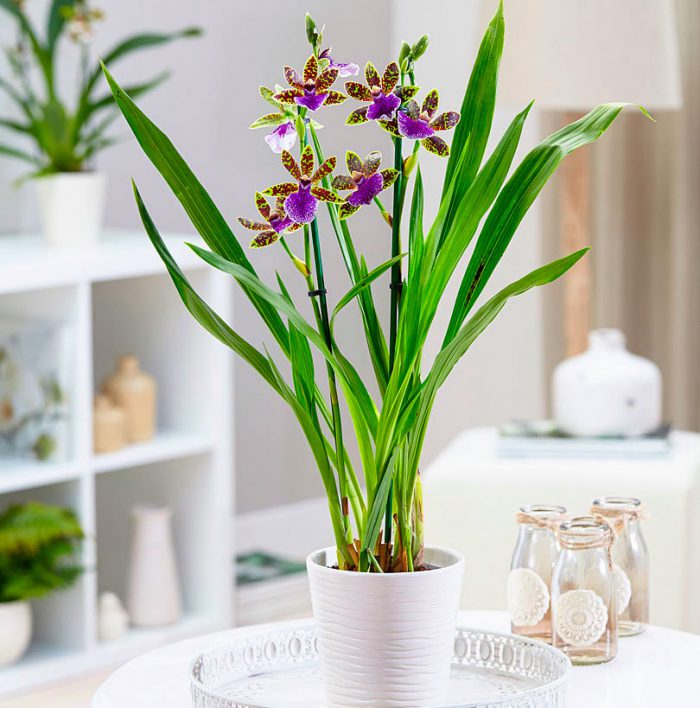
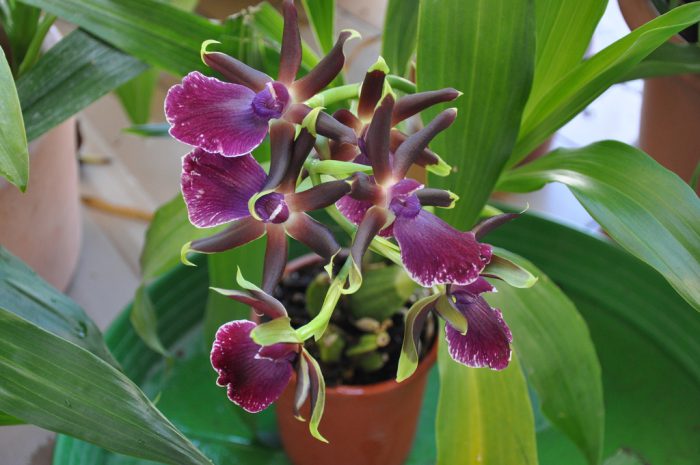
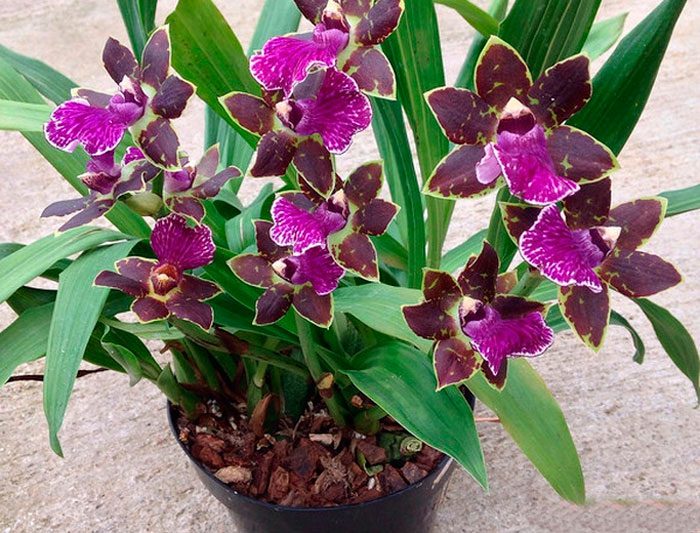


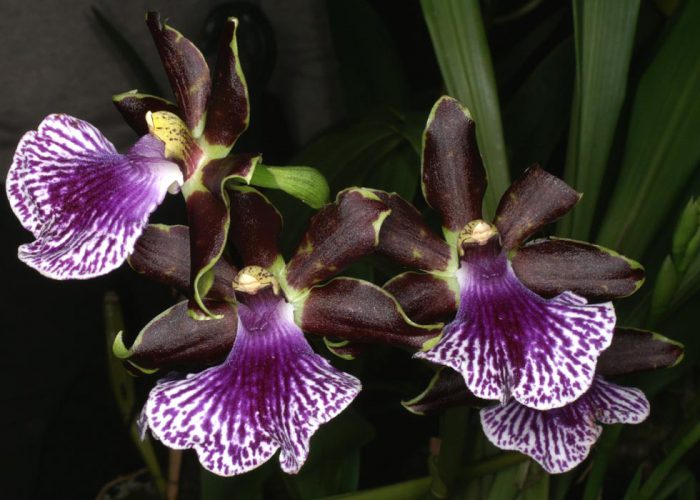



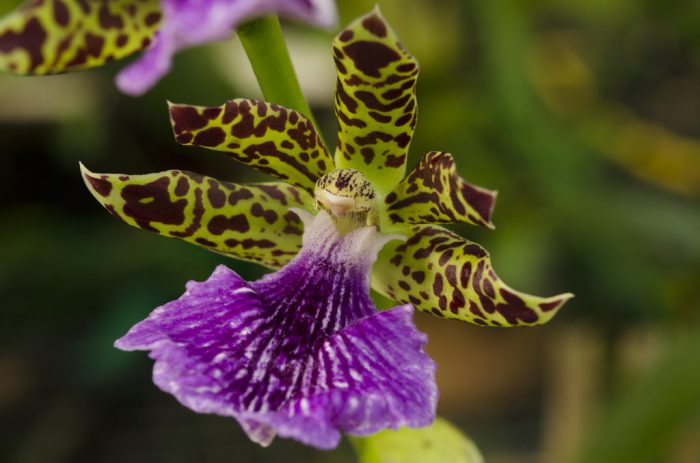
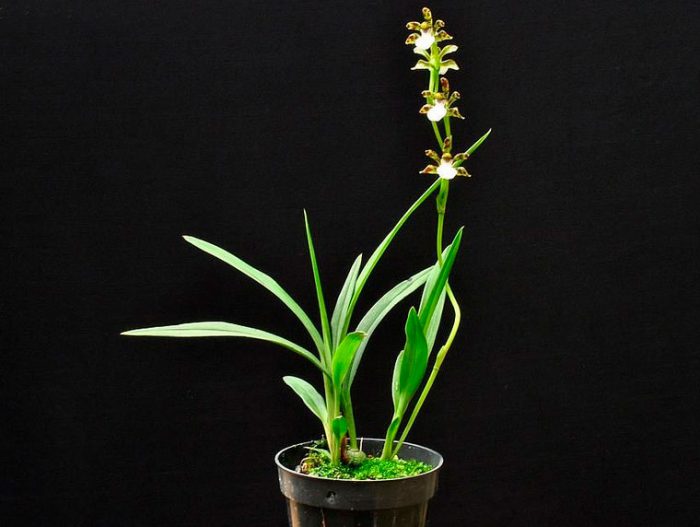


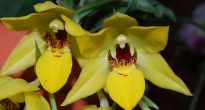
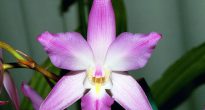
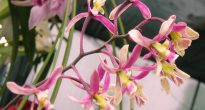
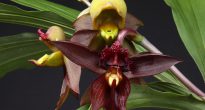

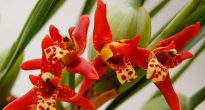
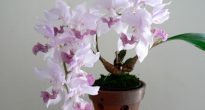

The orchid blooms twice a year, but only with strict and strict adherence to the recommendations for the care and maintenance of the flower.
Why doesn't anyone in the article or in the video talk about such an integral thing as aroma?
This orchid has its own unique honey-spicy aroma, aromas from the first rays of the sun to the last, i.e. during the day. She doesn't smell after sunset.
I had one. 2 months after the purchase, a new peduncle appeared ... blossomed ... I was delighted, after a while the leaves began to turn brown, became soft. I took them off, but the leaves turned brown one by one .... Did not save. Now I have pseudobulbs in my box ... ..what to do with them? I don't know…. without roots, without leaves. And the money was not small. I bought a new one… ..the situation repeats itself. Want to cry?